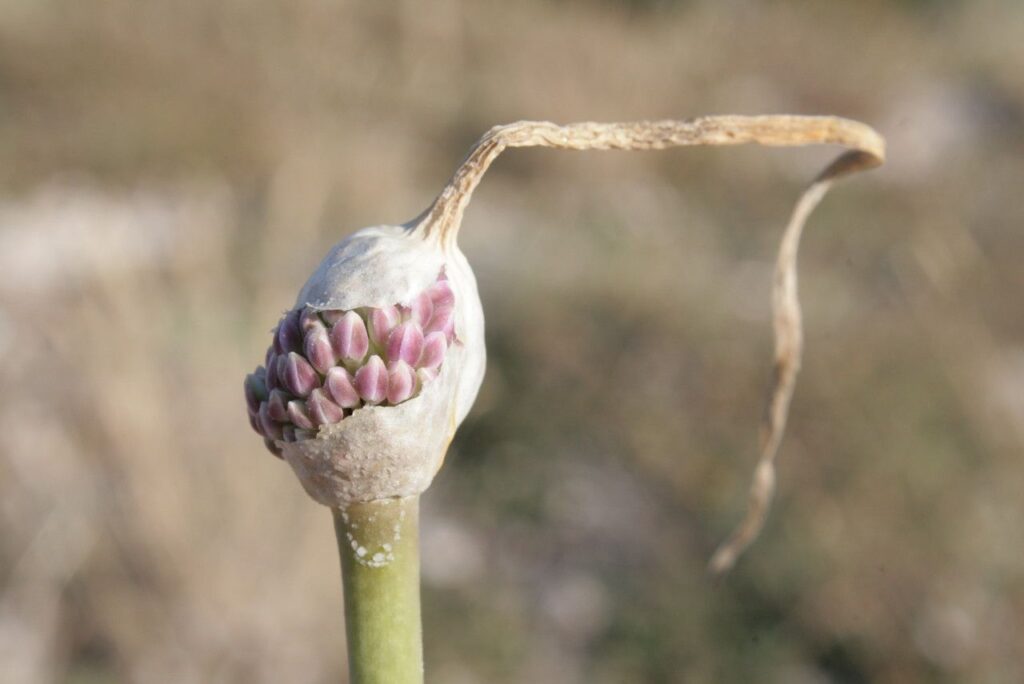From One Bulb to Many: The Simple Joy of Propagating Allium commutatum
The Allium commutatum, or ‘Mt. Everest’ onion, is a stunning ornamental onion that boasts vibrant, purple, globe-shaped flower heads atop tall stalks. But beyond its beauty, Allium commutatum is also a plant that’s remarkably easy to propagate, allowing you to expand your garden with these striking blooms year after year.
Understanding Allium commutatum Propagation
Propagation is simply the process of creating new plants from existing ones. For Allium commutatum, the primary method is division, which involves separating the plant’s bulb clusters into individual bulbs.
The Best Time to Divide
The ideal time to divide Allium commutatum is in the early fall, after the foliage has died back. This allows the newly divided bulbs to establish themselves before the cold weather sets in.
The Step-by-Step Guide to Division
-
Dig It Up: Carefully loosen the soil around the existing Allium commutatum clump with a garden fork or trowel. Gently lift the entire cluster out of the ground, being mindful not to break any bulbs.
-
Separate and Inspect: Separate the cluster into individual bulbs. Use a sharp knife or garden shears to carefully divide any bulbs that are stuck together. Inspect each bulb for any signs of damage or disease. Discard any bulbs that appear unhealthy.
- Plant It: Dig individual planting holes for each bulb, about twice the depth of the bulb’s height. Place the bulbs in the holes, pointed end facing upwards, and fill the holes with soil. Water the newly planted bulbs thoroughly.
Tips for Success
- Choose the Right Location: Allium commutatum thrives in well-drained soil and full sun. Choose a spot in your garden that meets these requirements.
- Spacing: Space the bulbs around 6–12 inches apart, depending on your desired overall look.
- Fertilization: Apply a balanced fertilizer to the soil before planting to encourage healthy growth.
- Watering: Water regularly, especially during dry periods, until the bulbs are established.
Benefits of Propagation
Dividing Allium commutatum offers several benefits:
- Increased Plant Numbers: You get more plants for your garden, allowing you to create larger, more dramatic displays.
- Healthy Plant Growth: Dividing helps prevent overcrowding, which can lead to stunted growth and disease.
- Free Plants: You can share your newly propagated bulbs with friends and family, or even start a whole new garden bed!
Beyond Division: Seed Propagation
While division is the easiest way to propagate Allium commutatum, you can also grow them from seed. This method takes a bit longer, but it’s still achievable:
- Sow the Seeds: Plant Allium commutatum seeds indoors in late winter or early spring.
- Provide Consistent Sunlight: Place seedlings in a bright, sunny location.
- Transplant Outdoors: When the seedlings are about 6 inches tall, transplant them outdoors in a prepared bed.
The Joy of Propagation
Propagating Allium commutatum isn’t just a practical skill – it’s a chance to connect with your garden on a deeper level. Watching these beautiful bulbs multiply and thrive is a rewarding experience that brings the joy of gardening to life. So, roll up your sleeves, get your hands dirty, and witness the magic of propagation unfold in your own backyard!
